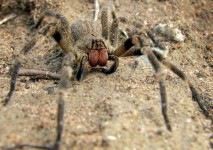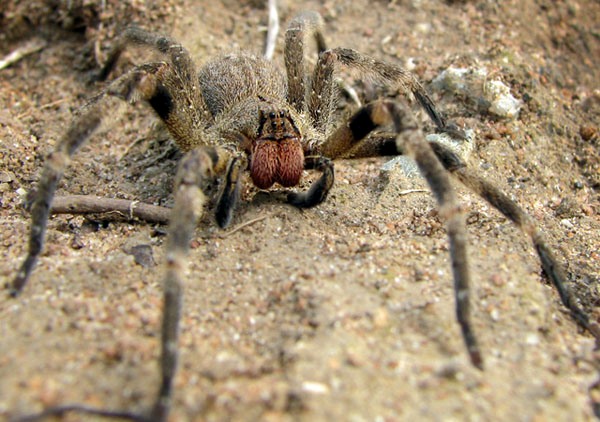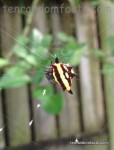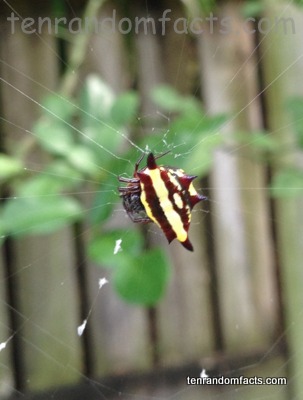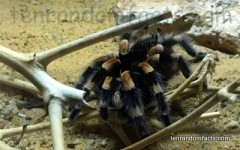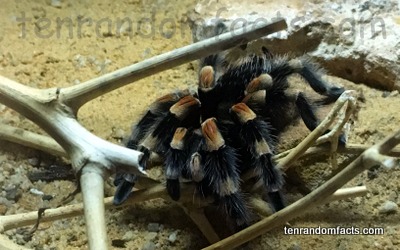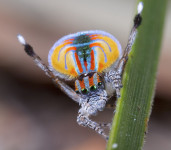
When a peacock spider dances, their life is literally on the line.
- Peacock spiders are a genus of colourful arachnids, native to Australia, often found in coastal areas, but they also exist inland.
- The scientific name of the peacock spider genus is Maratus and it is from the family Salticidae, the family of jumping spiders.
- Peacock spiders are extremely small, and generally range in length from 3.5 to 6.5 mm (0.14 to 0.26 inches); and they do not create webs to catch food, rather their prey is stalked and leapt upon.
- Male peacock spiders generally have an abdomen of bright metallic coloured patterns, from orange, blues, reds and greens.
- Peacock spiders are well known for their complex movements that is likened to dancing, used by males to attract and court females.
 A Male Peacock Spider
A Male Peacock Spider
Image courtesy of Jurgen Otto/Flickr
- If a male peacock spider fails to impress a female spider with their dance, the female will very likely eat the male, unless the male escapes by running off quickly.
- German Jürgen Otto, who works as a biologist in Australia, has discovered a large number of new species in the genus, and is the leading research scientist on the spider, in conjunction with American jumping spider specialist, David Hill.
- A single dance of a male peacock spider can last anywhere from four to fifty minutes, and movements can include leg waving above its body, and raising and flaring its abdomen in a similar way to a peacock feather train display, hence its common name.
- Scientific documentation of peacock spiders was first undertaken by the English zoologist Octavius Pickard-Cambridge, in 1874.
- Some species of ‘peacock spiders’ have been commonly named ‘flying spiders’ and ‘gliding spiders’, due to a false assumption that the flap on its abdomen is used to fly.



